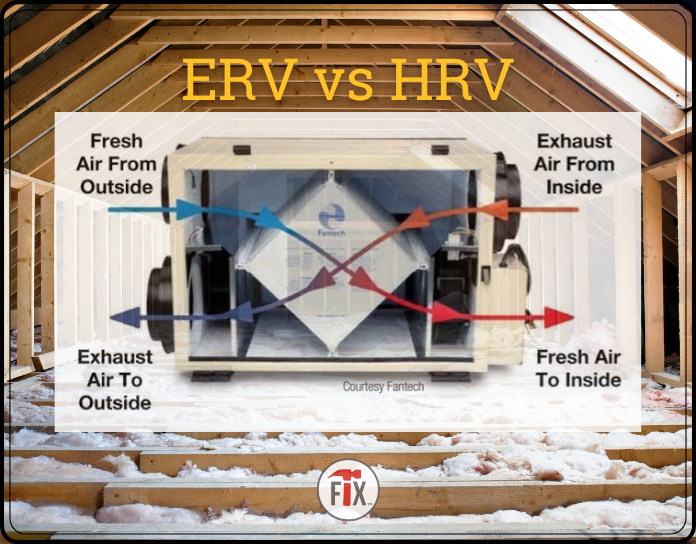
Updated: 05/10/2024
This technical blog is all about improving indoor air quality in your home. We’ll take a look at whole-house ventilation systems, specifically Energy Recovery Ventilators (ERVs) and Heat Recovery Ventilators (HRVs). So it’s ERV vs HRV…we’ll compare the two systems, so don’t miss it!
Improving Indoor Air Quality: So How Much Fresh Air Does a House Need?
For example, an inefficient home may leak so much air that all the home’s air is replaced up to 4 times per hour. That can get expensive from an energy standpoint. This air isn’t necessarily the right temperature or clean as it filters through dirty walls and cavities. In an efficient home, it may only have, say 1 or less air exchanges per hour. This is good for energy efficiency, but bad for air quality.
Most building codes rely on the *ASHRAE standard 62.2 (or some variation of it) to establish ventilation norms for homes.
*ASHRAE (American Society of Heating, Refrigeration and Air-Conditioning Engineers) is the most respected and authoritative source for interior air quality standards. ASHRAE 62.1 and 2 are the recognized standards for ventilation and indoor air quality (IAQ).
Indoor Air Quality – Two Scenarios With Home Ventilation
With all the “green” efforts going on today, to make homes (new and old) more energy efficient, there are basically two scenarios going on in regards to how your house is “breathing”.
Conventional House – Was not built with energy efficiency in mind, such as the “balloon framing” we discussed in a previous blog. Where the house is allowed to “breathe or ventilate” via open an/or uninsulated wall cavities, attics, etc. New (not necessarily clean) air basically leaks in everywhere to ventilate the house of “stale” air.
Modern Homes / Older “Retrofit” Homes – These homes are built to current, more stringent building codes or, as previously discussed, are older homes that have been “retrofit” to be more energy efficient – through insulation upgrades, air sealing, etc. The house “envelope” is sealed up and only allowed to “breathe or ventilate” via specific control points. New, clean air is introduced into the house, while “stale” air is exhausted out, via a whole house air exchanger, like an ERV or HRV. A few models even have HEPA filters…more on this next week…
So What are ERV/HRV Systems, and Why Would I need One?
Houses built or “retrofit” to much higher standards of air tightness, need a mechanical ventilation system, as it is essential for maintaining proper air quality, removing contaminants (mold spores, VOCs, building material chemicals), and excess humidity from kitchens, bathrooms, and any other sources of water vapor or condensation.
HRV – Heat Recovery Ventilation: Uses the heat or temperature of the stale exhaust (outgoing) air to preheat or pre-condition the incoming fresh air. This reduces the energy required to bring outside air up to ambient room temperature.
ERV – Energy Recovery Ventilation: Basically the same function as HRV, plus it allows moisture transfer across the air streams (retention or removal of humidity based on season) – from kitchens, bathrooms, etc. An ERV is not a dehumidifier per se, but can greatly balance or reduce humidity levels in the home. Check out the video below for on ERVs vs HRVs…
Field Controls HRV/ERV Recovery Ventilator Systems
ERV/HRV Demo: Actual Air Temps as They Are Exchanged and Pre-condition Each Other…this is pretty cool!!!
Fundamentals of Energy Recovery Ventilators (ERVs)
Indoor Air Quality: So How Do You Choose: ERV or HRV?
Here is what our friends over at ecohome.net have to say about it. Read the entire article HERE
The best option between an ERV and an HRV depends on your climate and specific needs. If your house is too humid in winter (above 60% RH) then an HRV is the better choice, as it would surely get rid of excess humidity while an ERV would tend to keep it at a high level.
If the opposite is true and your house is too dry in winter, then an ERV would be a better choice as it helps retain humidity, eliminating the need (and cost) for you to generate it through other means.
In summer time, the use of an HRV will usually increase the humidity level inside your home, so an ERV is better in hot and humid zones. But a dedicated dehumidifier will likely do the trick much better. At the very least, the ERV will lower the load on the air conditioning system, even if it can’t keep up with the high humidity level on the outside.
So in the end, there is not one right choice. It depends on your climate, your lifestyle and your home. In a perfect world we would have one of each, short of that we are left to make a choice based on your specific needs.
Indoor Air Quality: Our Choice
We chose an ERV for our home based on the humidity reduction and temperature balancing functions. This model of ERV also includes HEPA filtration, for ultimate indoor air quality!
For more info and pricing:
ERV100S Broan HEPA Air Exchanger (H50100E Venmar HEPA ERV) – discontinued
Replaced with - Broan® AI Series™ 130 CFM Energy Recovery Ventilator (non-HEPA ERV)
- In my experience, the total, installed price should run about $2000-3000
- More on the HEPA series air exchangers (ERVs) and system set up, in the next technical blog
Do you currently have an HRV, ERV, or are you considering one to improve your indoor air quality? What are your thoughts, concerns, or questions? Hit me up in the comment section below…
Best of luck, and keep on Fixing!

For more info visit: www.myoldhousefix.com
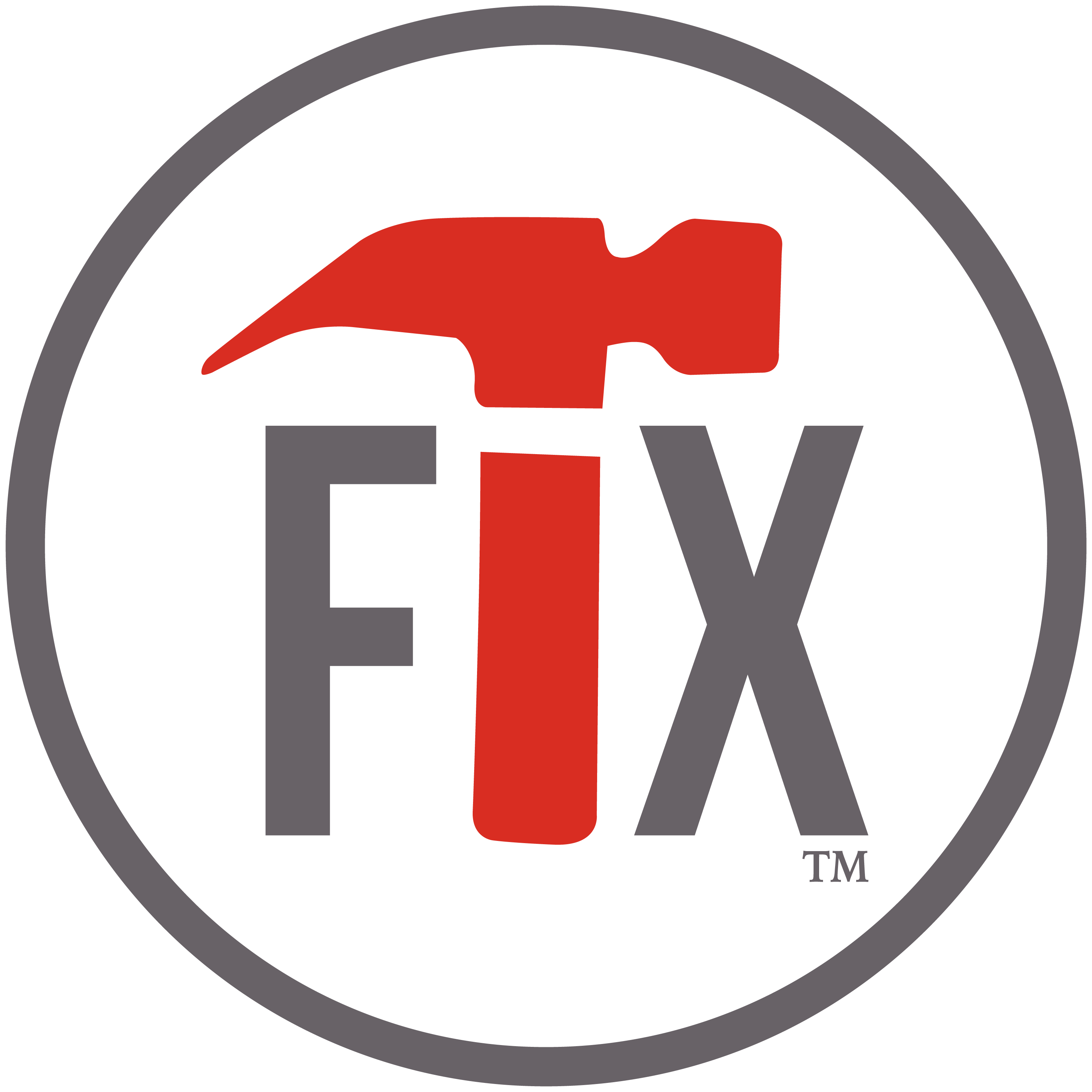
Posts may contain affiliate links. If you use these links to buy something, we may earn a small commission (at no additional cost to you). Full disclaimer HERE.

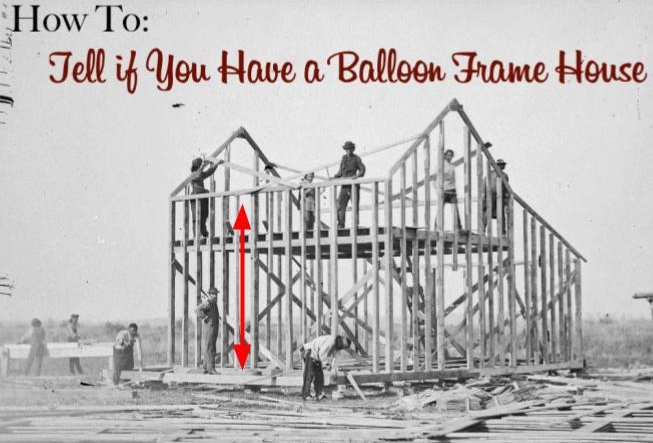
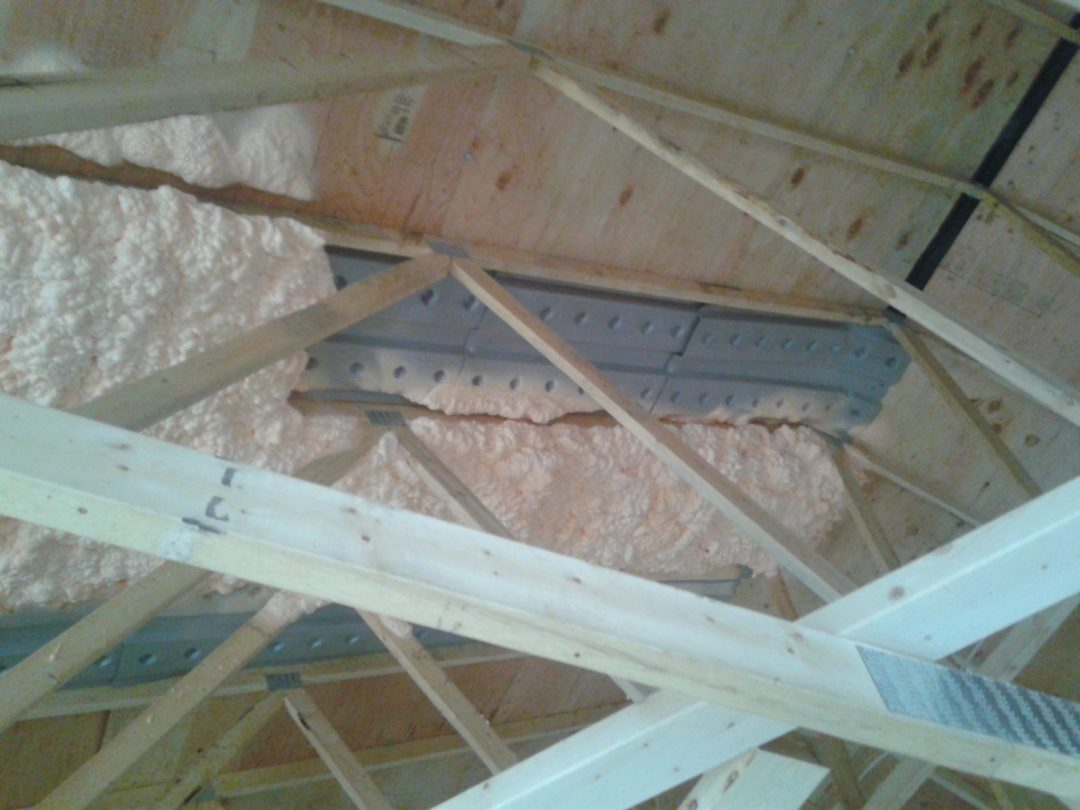
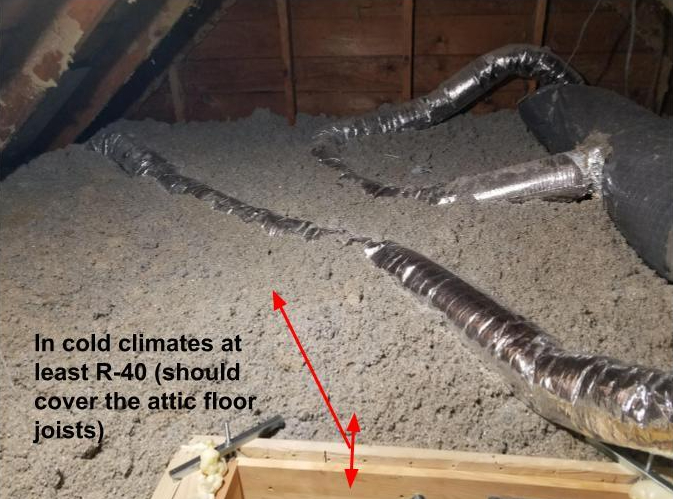
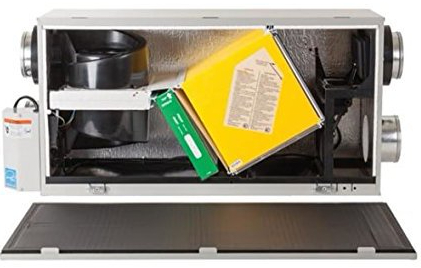

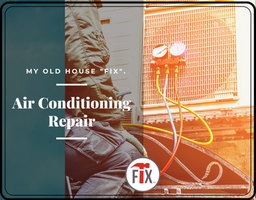



0 Comment(s)